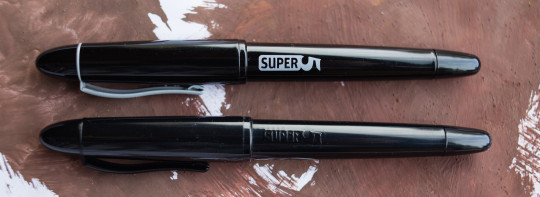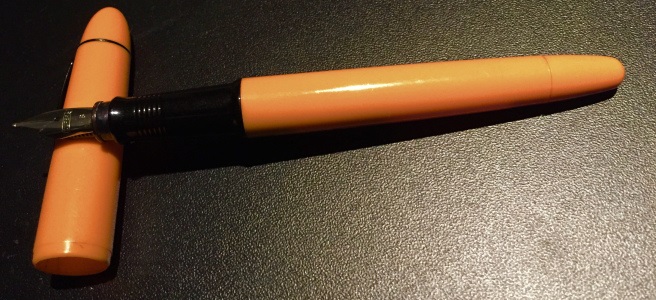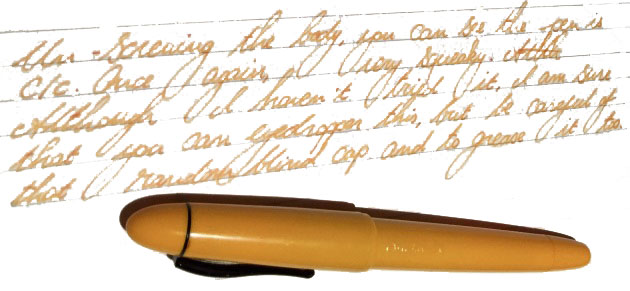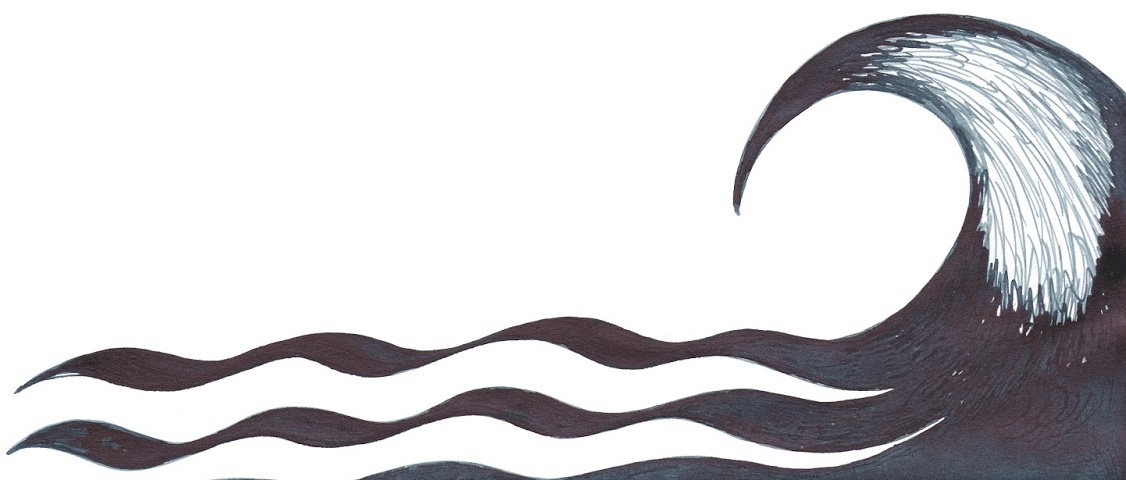A little bit of history Last year we made contact (via Matthias) with the remarkable Super5 in Germany, and a select band of bloggers got to grips with their novel range of pens and inks. It’s such a distinctive collection that just this once we’re reviewing a whole brand, rather than just one product. The range includes fountain pens, rollerballs, and FP-friendly permanent inks – you can see why we couldn’t resist!
How it looks The Super5 pen, in all its variants, looks a lot like the Kingsley Dex and the Manuscript Master, which is hardly surprising as it shares its basic Helit body with both. Like the Master, it has a nice metal sections too, and the useless but fun screw-off blind cap which could, just about, allow access to the turning knob of a converter if you wanted it to (but you won’t want it to, honestly). This is a comfortable, appealing shape and there’s a decent range of colour schemes too. The inks looks like they come in Rohrer&Klingner bottles, because that’s precisely what they are.
How it feels The pen’s body is a combination of warm plastic and firm but comfortable metal (in the section). ‘Nothing to complain about there.
How it fills Pop in a cartridge, or if you want to make the most of the Super5 ink range, a normal ‘international’ converter. It’s all very straightforward.
Crucially, how it writes… Very well, and quite differently from many other affordable fountain pens. The round nib has iridium tipping but the italic versions have none – just polished steel. Of course, that’s just fine if calligraphy is your style. If you really can’t handle fountain pens, which seems unlikely if you’re reading this but let’s roll with it anyway, there’s also a rollerball version which accepts the same cartridges or converters so you can use fountain pen ink.
Pen! What is it good for? The italic nibs (0.5mm and 0.7mm respectively) are particularly good for fast semi-calligraphic writing. They work with the Super5 permanent inks, too, so they’re pretty handy.
Ink! What is it good for? While the names of some of the inks baffled us a bit, we all thought they worked very well in the Super5 pens, flowing impressively well for such a thick ink. So, it’s good stuff for calligraphy – as long as you give your pen an occasional flush-through afterwards.
VFM These have to be imported, and they are only procured in relatively small batches, so the pens are inevitably not going to be quite as affordable as the humble Dex – indeed, they’re about twice the price. That’s still not ridiculous money for pens which work well and can handle some punishment, though. The ink is a little steeper, but still fair value if a coloured permanent ink is just what you need.
If this isn’t quite your cup of tea, but almost… The Dex and Manuscript Master are pens worth a look instead. KWZ are working on some permanent inks which could prove competition in the refill department.
Our overall recommendation It’s all worth a look – and if you want something no-one else in the office is likely to have, this is a sure-fire bet.
Where to get hold of one Direct from ‘Papierlabor‘ is the only way.
This meta-review references:
- Matthias’s text-and-photos review of the fountain pen
- Scribble’s hand-written reviews of the standard and italic fountain-pens, rollerball and inks
- John’s reviews of the fountain pen and the inks
- Daniel’s review of the orange ‘delhi’ fountain pen
Thanks to Super5 for the generous set of test samples.